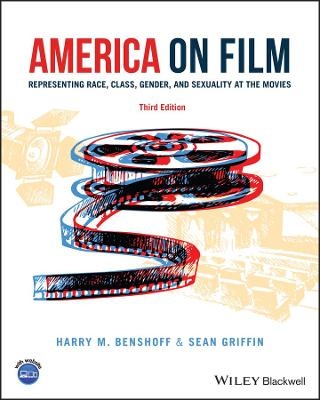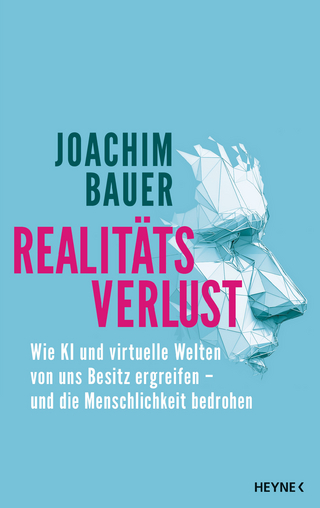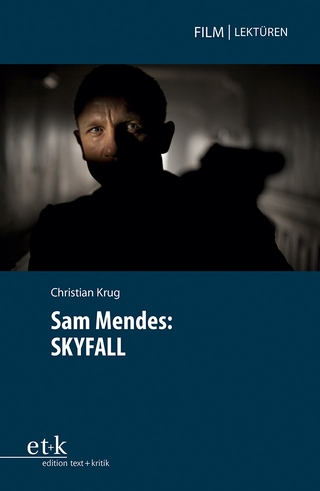
America on Film
Wiley-Blackwell (Verlag)
978-1-118-74365-2 (ISBN)
America on Film: Representing Race, Class, Gender and Sexuality at the Movies, now in its third edition, is an authoritative and lively examination of diversity issues within American cinema. Celebrated authors and academics Harry M. Benshoff and Sean Griffin provide readers with a comprehensive discussion and overview of the industrial, socio-cultural, and aesthetic factors that contribute to cinematic representations of race, class, gender, sexuality, and ability.
The book incorporates several different theoretical perspectives, including film genre, auteurism, cultural studies, Orientalism, the "male gaze," feminism, and queer theory. The authors examine each selected subject via representative films, figures, and movements. Each chapter also includes an in-depth analysis of a single film to illuminate and inform its discussion of the chosen topic.
America on Film fearlessly approaches and tackles several controversial areas of representation in film, including the portrayal of both masculinity and femininity in film and African- and Asian-Americans in film. It devotes the entirety of Part V to an analysis of the depiction of sex and sexuality in American film, with a particular emphasis on the portrayal of homosexuality. Topics covered include:
The structure and history of American filmmaking, including a discussion of the evolution of the business of Hollywood cinema
African Americans and American film, with a discussion of BlacKkKlansman informing its examination of broader issues
Asian, Latin/x, and Native Americans on film
Classical Hollywood cinema and class, with an in-depth examination of The Florida Project
Women in classical Hollywood filmmaking, including a discussion of the 1955 film, All that Heaven Allows
Perfect for undergraduate and graduate students in film, media, and diversity-related courses, the book also belongs on the shelves of anyone interested in diversity issues in the context of American studies, communications, history, or gender studies. Lastly, it's ideal for use within corporate diversity training curricula and human relations training within the entertainment industry.
HARRY M. BENSHOFF, PhD, is Professor of Media Arts at the University of North Texas. He received his PhD in Critical Studies at the University of Southern California’s School of Cinema-Television. His research focuses include the representation of African Americans and queer people in film and television, particularly within the horror genre. SEAN GRIFFIN, PhD, is Professor of Film and Media Arts, Southern Methodist University. He received his doctorate from the University of Southern California in 1997. He has written and studied extensively in the area of queer representation in film, as well as the history of the American musical film.
Preface to the Third Edition xi
Acknowledgments xiv
How to Use This Book xvi
About the Companion Website xviii
Part I Culture and American Film 1
1 Introduction to the Study of Film Form and Representation 3
Film Form 3
American Ideologies: Discrimination and Resistance 6
Culture and Cultural Studies 12
Case Study: Two Lion Kings (1994 and 2019) 17
Questions for Discussion 21
Further Reading 21
2 The Structure and History of Hollywood Filmmaking 22
Hollywood vs. Independent Film 22
The Style of Hollywood Cinema 24
The Business of Hollywood 29
The History of Hollywood: The Movies Begin 31
The Classical Hollywood Cinema 35
World War II and Postwar Film 37
“New” Hollywood and the Blockbuster Mentality 40
Box: A Brief History of Television in the United States 42
21st‐Century Convergence Culture 44
Questions for Discussion 47
Further Reading 47
Further Screening 48
Part II Race and Ethnicity and American Film 49
Introduction to Part II: What is Race?
3 The Concept of Whiteness and American Film 55
Seeing White 56
Bleaching the Green: The Irish in American Cinema 60
Looking for Respect: Italians in American Cinema 64
A Special Case: Jews and Hollywood 69
Case Study: The Jazz Singer (1927) 74
Veiled and Reviled: Arabs on Film in America 74
Conclusion: Whiteness and American Film Today 80
Questions for Discussion 81
Further Reading 81
Further Screening 82
4 African Americans and American Film 83
African Americans in Early Film 83
Blacks in Classical Hollywood Cinema 87
World War II and the Postwar Social Problem Film 89
The Rise and Fall of Blaxploitation Filmmaking 92
Box: Blacks on TV 94
Hollywood in the 1980s and the Arrival of Spike Lee 96
Black Independent vs. “Neo‐Blaxploitation” Filmmaking in the 1990s 98
African Americans and the Oscars 100
Case Study: BlacKkKlansman (2018) 103
The Twenty‐first Century: Smaller Films, Bigger Profits? 106
Conclusion 108
Questions for Discussion 109
Further Reading 109
Further Screening 110
5 Native Americans and American Film 111
The American “Indian” Before Film 112
Ethnographic Films and the Rise of the Hollywood Western 114
The Evolving Western 118
A Kinder, Gentler America? 121
Case Study: Smoke Signals (1998) 124
Conclusion: Twenty‐first Century Indians? 125
Questions for Discussion 129
Further Reading 129
Further Screening 129
6 Asian Americans and American Film 130
Silent Film and Asian Images 131
Asians in Classical Hollywood Cinema 133
World War II and After: War Films, Miscegenation
Melodramas, Kung Fu, and the Start of Asian American
Independent Filmmaking 136
Towards a Global Hollywood: Asian American Actors
and Filmmakers of the Last Thirty Years 141
Case Study: Crazy Rich Asians (2018) 146
Conclusion 148
Questions for Discussion 148
Further Reading 148
Further Screening 149
7 Latinos and American Film 150
The Greaser and the Latin Lover: Alternating Stereotypes 152
World War II and After: The Good Neighbor Policy 155
The 1950s to the 1970s: Back to Business as Usual? 159
Expanding Opportunities in the 1980s and 1990s 161
Case Study: My Family/Mi Familia (1995) 164
Latino Film in the 21st Century 166
Conclusion: Which Way Forward? 169
Questions for Discussion 171
Further Reading 172
Further Screening 172
Part III Class and American Film 173
Introduction to Part III: What is Class?
8 Classical Hollywood Cinema and Class 179
Setting the Stage: The Industrial Revolution 179
Early Cinema: The Rise of the Horatio
Alger Myth 181
Hollywood and Unionization 185
Class in the Classical Hollywood Cinema 188
Case Study: The Grapes of Wrath (1940) 190
Conclusion: Recloaking Class Consciousness 192
Questions for Discussion 192
Further Reading 193
Further Screening 193
9 Cinematic Class Struggle After the Depression 194
From World War II to the Red Scare 194
From Opulence to Counterculture 197
Box: Class on Television 202
New Hollywood and the Resurrection of the Horatio Alger Myth 202
Corporate Hollywood and Labor in the 21st Century 208
Case Study: The Florida Project (2017) 213
Questions for Discussion 215
Further Reading 215
Further Screening 215
Part IV Gender and American Film 217
Introduction to Part IV: What is Gender?
10 Women in Classical Hollywood Filmmaking 223
Images of Women in Early Cinema 224
Early Female Filmmakers 228
Images of Women in 1930s Classical Hollywood 231
World War II and After 235
Case Study: All that Heaven Allows (1955) 238
Questions for Discussion 240
Further Reading 240
Further Screening 241
11 Exploring the Visual Parameters of Women in Film 242
Ways of Seeing 242
“Visual Pleasure and Narrative Cinema” 245
Case Study: Gilda (1946) 254
Conclusion: Complicating Mulvey’s Arguments 255
Questions for Discussion 258
Further Reading 258
Further Screening 258
12 Masculinity in Classical Hollywood Filmmaking 259
Masculinity and Early Cinema 262
Masculinity and the Male Movie Star 263
World War II and Film Noir 268
Case Study: Dead Reckoning (1947) 273
Masculinity in 1950s American Film 274
Questions for Discussion 277
Further Reading 277
Further Screening 277
13 Gender in American Film Since the 1960s 278
Second Wave Feminism and Hollywood 278
Box: Women and American Television 282
Into the 1980s: A Backlash against Women? 285
A New Generation of Female Filmmakers 288
Gender at the Turn of the Century 292
Gender Politics after 9/11 294
Case Study: Wonder Woman (2017) 297
Questions for Discussion 299
Further Reading 300
Further Screening 300
Part V Sexuality and American Film 301
Introduction to Part V: What is Sexuality?
14 Heterosexuality, Homosexuality, and Classical Hollywood 307
(Hetero)Sexuality on Screen 307
(Homo)Sexuality in Early Film 309
Censoring Sexuality during the Classical Hollywood Era 311
Postwar Sexualities and the Weakening of the Production Code 316
Camp and the Underground Cinema 320
Case Study: The Celluloid Closet (1995) 322
Questions for Discussion 323
Further Reading 324
Further Screening 324
15 Sexualities on Film Since the Sexual Revolution 325
Hollywood and the Sexual Revolution 325
Film and Gay Culture from Stonewall to AIDS 327
The AIDS Crisis 332
Queer Theory and New Queer Cinema 334
Box: Queer TV 338
Hollywood Responds to New Queer Cinema 340
Case Study: Love, Simon (2018) 344
(Hetero)Sexualities in Contemporary American Cinema 346
Conclusion: The Power Dynamics of Sexuality 349
Questions for Discussion 351
Further Reading 351
Further Screening 352
Part VI Ability and American Film 353
Introduction to Part VI: What is Ability?
16 Cinematic Images of (Dis)Ability 359
Disabled People in Early American Film: Curiosities and Freaks 360
Romanticizing Disability in Classical Hollywood Melodramas 364
Disability in War Movies and Social Problem Films 366
Disability and the Counterculture 369
Case Study: Children of a Lesser God (1986) 373
After the 1980s: A More Enlightened Hollywood? 374
Far From Hollywood: Documentary, Activism,
and New Modes of Television 377
Questions for Discussion 380
Further Reading 380
Further Screening 381
Glossary 382
Index 404
| Erscheinungsdatum | 20.04.2021 |
|---|---|
| Verlagsort | Hoboken |
| Sprache | englisch |
| Maße | 203 x 249 mm |
| Gewicht | 839 g |
| Themenwelt | Kunst / Musik / Theater ► Film / TV |
| Kunst / Musik / Theater ► Theater / Ballett | |
| Sozialwissenschaften ► Kommunikation / Medien ► Medienwissenschaft | |
| Schlagworte | Communication & Media Studies • Cultural Studies • Film • Filmforschung • Film Studies • Kommunikation u. Medienforschung • Kultursoziologie • Kulturwissenschaften • Media Studies • Medienforschung • Sociology • Sociology of Culture • Soziologie • USA |
| ISBN-10 | 1-118-74365-2 / 1118743652 |
| ISBN-13 | 978-1-118-74365-2 / 9781118743652 |
| Zustand | Neuware |
| Haben Sie eine Frage zum Produkt? |
aus dem Bereich


